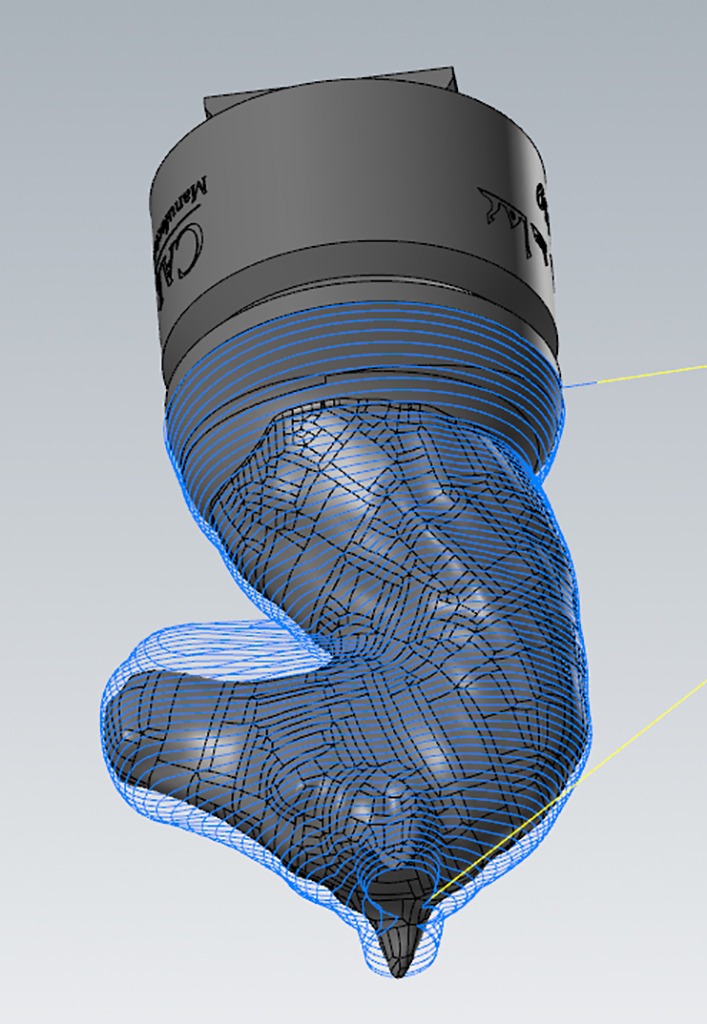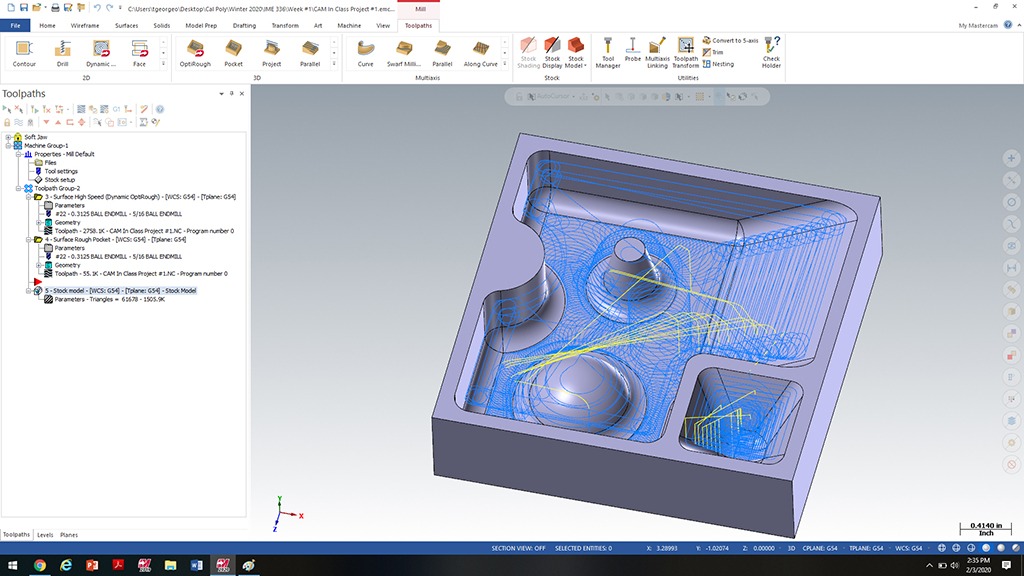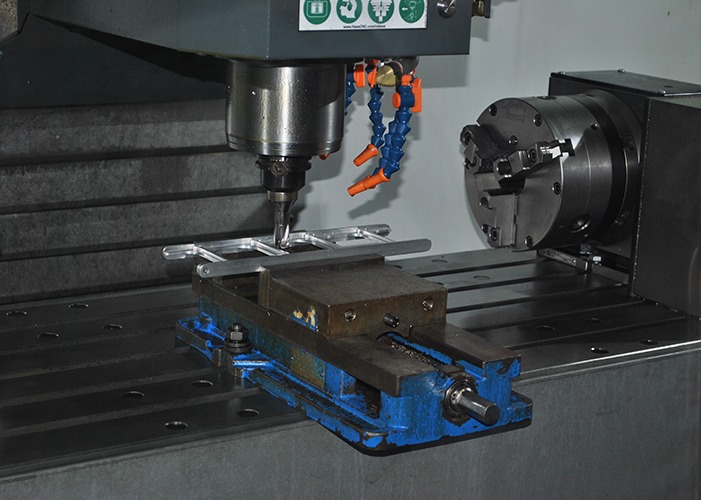
Practical Experience Fosters Success at Top Engineering Program
California Polytechnic State University aims to make students sound, practicing engineers from the moment they graduate.
Quick Facts
- Product Used: Educational Suite, Dynamic Motion, Mill, Art
- Industry: Education

Project Details
- The Challenge: Develop critical Design for Manufacturability (DFM) skills of students at the nation’s top university manufacturing engineering program.
- The Solution: Mastercam, the world’s leading CAD/CAM software.
- Benefits:
- Engineering students develop practical experience with the most popular CAD/CAM software used in the industry and requested by potential employers.
- Robust CAM system provides students with multiple multiaxis toolpaths to meet a range of machining needs.
- The product’s intuitive nature and increased control improves instruction, enable greater customization.
Few universities are better qualified to turn out successful engineers than California Polytechnic State University (Cal Poly) in San Luis Obispo, California. Cal Poly’s College of Engineering was ranked the country’s eighth-best undergraduate program in 2019 by U.S. News & World Report. The annual guide to America’s Best Colleges named the college’s Industrial & Manufacturing Engineering (IME) department number one in the nation. The program’s “learn by doing” philosophy aims to make students sound, practicing engineers from the moment they graduate.

“Cal Poly is really all about hands-on learning,” said Trian Georgeou, manufacturing engineering lecturer. “We immerse the students in lab situations that will parallel what they’re going to see out in industry.”
Georgeou heads up freshman-level introductory machining courses and teaches advanced IME courses including Computer-Aided Manufacturing, which features training in CAD/CAM software using Mastercam.

“Cal Poly believes that every engineer should be exposed to manufacturing. Every freshman engineering student, whether they’re aerospace, materials engineering, manufacturing engineering, industrial, mechanical, or even general engineering, has to take a CNC machining course,” said Georgeou. Cal Poly students pursuing a mechanical engineering degree with a concentration in manufacturing must take six upper-level manufacturing engineering courses.

The IME program features 15 design-centered laboratories including the Gene Haas Advanced Manufacturing Lab, a material removal/machining lab, and two CAD/CAM labs with dozens of seats of Mastercam in each. The Gene Haas Lab contains a Haas toolroom lathe, ST 20 Y-axis lathe with live tooling, three VF-2 vertical machining centers, six simulators, and a rare ZM-1 laser machining center. The freshman Material Removal Lab includes several manual LeBlond lathes alongside seven Haas CNC Mini-Mills, a Haas ST-10 turning center, a Morgan Press injection molding machine, a Universal laser cutter, and an Omax ProtoMax water jet.
“We’re not training machinists, but we are training engineers who understand the principles of design-for-manufacturability (DFM) and build that into their engineering skill set. Ideally, this will help them be better designers so that they aren’t making bad design decisions when they’re working for real customers,” said Georgeou.
“We have about 100 percent placement for our manufacturing engineering graduates because everyone wants engineers with practical hands-on experience as opposed to those that just learned theory in their university programs,” said Georgeou.
“Real world” practicality extends to Georgeou’s choice in CAD/CAM software.
“I selected Mastercam, because it’s the number one tech CAM software in the world, and we want our engineers to basically see what they’ll see out in the industry. We want them to have a robust CAM package that can tackle all their machining needs,” said Georgeou. “When we get into multiaxis machining, the other CAM systems don’t have as many different toolpaths to get the job done. When you look at the jobs that these manufacturing and mechanical engineering students are going after, they commonly list Mastercam experience as a job requirement.”
Upper-level IME students learn manual programming before tackling Mastercam and SOLIDWORKS®. They move into simple lathe programming followed by more multiaxis work. Instruction culminates with students designing a small impeller wheel with five sand blades, a difficult part to machine, using various 5-axis toolpaths to cut different blade shapes.
One IME class covers more multiaxis work. “We have a small 3+1 positioning part. Students have to locate their coordinate system on the center of rotation and figure out how to index the part by pointing the Z upward to the tool orientation based on the right-hand rule, “ Georgeou shared.


“Our belief is that students should know about all the different types of toolpaths, and they should be able to put together in their mind how to get a part done efficiently using those tools or toolpaths,” said Georgeou.
Some students also use Mastercam Art to design their own patterns for casting. Mastercam Art’s visualization tools and editing features let students create sculpted parts from 2D sketches, clip art, photos, and CAD files by crafting them onscreen and cutting them with specialized toolpaths. No surface modeling expertise is required.
A $40,000 working scholarship from the Gene Haas Foundation funds an “earn by doing” incentive that complements Cal Poly’s “learn by doing” approach. The grant supports student lab technicians like Emad Haddad, a fifth-year manufacturing engineering major, who works in the Haas Advanced Manufacturing Lab helping beginning students operate CNC machines and designing projects for the advanced CNC programming class.
Haddad used Mastercam to create a completely 3D horse’s head representing the school’s mascot—the Cal Poly Mustang—on a 5-axis Haas machine, gaining the attention of potential employer SpaceX.
“This was a much more advanced project than anything I’d done. I watched the 5-axis programming videos that Mastercam makes available, and that taught me how to control the toolpaths,” said Haddad. “I have much more control with Mastercam, and I can customize how things cut, which is harder to do with the other programs.
“The engineering program at Cal Poly is phenomenal. No other school that I know of has this amount of technology and access to working with 5-axis machines,” said Haddad. “They teach you both a trade at Cal Poly and they teach you the engineering piece of it. Your first or second day as a freshman, you’re already on a machine.”
Cal Poly engineering graduates are regularly recruited by high-profile companies such as Lockheed Martin, Boeing, Apple, and Tesla Motors, who say they specifically seek out Cal Poly graduates because they can “hit the ground running.” Cal Poly’s “learn by doing” approach to education is paying dividends for many talented students and employers who open their doors to them.
Customer Quote
“I would say Mastercam is more robust than any other CAM system. As we get into multiaxis machining, the other systems don’t have as many different toolpaths to get the job done. When you look at the jobs that these manufacturing and mechanical engineering students are going after, they commonly list Mastercam experience as a job requirement.”
—Trian Georgeou, Manufacturing Engineering Lecturer, Cal Poly, San Luis Obispo, California
Reseller Quote
“I watched the 5-axis programming videos that Mastercam makes available, and that taught me how to control the toolpaths. I have much more control with Mastercam, and I can customize how things cut, which is harder to do with the other programs.”
—Emad Haddad, Student Lab Technician – Manufacturing Engineering Major, Cal Poly, San Luis Obispo, California


